四年级上册《 Story time》导学案苏教版(精选2篇)
四年级上册《 Story time》导学案苏教版 篇1
四年级上册《 story time》导学案苏教版
第 一 教时
【教学内容】
story time
【教学目标】
1. 理解故事内容,能有感情的朗读故事。
2.能听懂,会读,会说以下词汇: banana, grape, mango, pineapple, salad, make
3.能听懂、理解、会读并初步运用句型:
i have…do you have a…?
【教学重点】
理解故事内容,能有感情的朗读故事。
【教学难点】
能听懂、理解、会读并初步运用句型:
i have…do you have a…?
【教学准备】
cai, pictures,
【预习要求】
1 跟录音读课文5遍。
2 圈出生字,并写出中文。
【教学过程】
step 1. free talk and warm-up
(1) greeting
(2) free talk &warm-up
t:出示动物图片,并和学生运用单复数句型交流复习。
do you like…s?
yes, i do./no, i don’t.
简单渗透:i have a toy monkey. do you have toy monkeys?
step 2 story time
(1)出示水果图片
t: are they animals?...
yes, they are fruit.(学习生词)
(2)出示课文第5幅图
t: what fruit are these on the table?
(学生看图自由说水果) (此处渗透水果发音)
where are they?
what do they make? (学习make)
(3)let’s watch and answer.
what do they make?
let’s make a fruit salad.((学习生词)
(4)揭题
(5)listen and tick.
(反复听录音,勾出他们谈论的水果,并指导学生水果单词的发音。)
四年级上册《 Story time》导学案苏教版 篇2
一、教学内容及教学目标
本节课为第四单元第六课时的故事教学。讲述的是老松鼠给小松鼠讲松鼠尾巴变浓密的故事。
教学目标:通过阅读趣味故事,复习巩固本单元所学元,增加学生语言的输入。能理解故事内容、能朗读故事,能恰当提取并运用故事中的语言。
二、教学重难点
重点:理解、朗读并表演故事。
难点:观察、发现小松鼠尾巴的作用,理解文本传递的信息。
三、教学过程
I. Warm-up
Free talk
T: Do you like animals? What’s your favorite animal? What are your hobbies? What are …’s hobbies?
【设计意图】
II. Lead-in
1. Teacher shows some pictures of cute animals (a puppy is playing a ball; a kitty is sleeping; a monkey is eating banana; a squirrel is eating nuts), then asks students the favorite food of these animals, which leads to the hobbies of squirrel, the story of squirrel.
2. Teacher tells a story and asks a question
T: There is a squirrel family in the forest. One day, the little squirrel asked its grandpa, why is the squirrel’s tail bushy? Grandpa then told the little squirrel a story.
III. Presentation
Teacher tells the story and leads students to look at the picture so as to better understand the plot of the picture.
1. Teacher tells the plot of picture 1 with the aid of picture, TPR.
2. Teacher illustrates picture 2, leads students to watch the facial expressions of the monkey King, and asks questions:
T: Does Monkey King like these gifts?
T: Can they get food from his forest?
T: Zac is hungry. He needs some food. But the Monkey King doesn’t like these gifts. What can he do?
3. Teacher explains picture 3 and asks question about monkey’s interest.
T: What are the Monkey King’s hobbies? Does the Monkey King like Zac’s music?.
4. Teacher elicit students’ thinking about the change of the squirrel’s tail by asking question T: Why is Zac so happy?
5. Teacher tells picture 5 and 6, instructing students to catch the main idea.
IV. Practice
1. Students listen to the tape.
2. Students listen to the tape and read after it. (Teacher presents picture 1, 2)
T: If you were Zac or Monkey King, what would you say?
小学英语教师资格面试—《 Story Time》教案
S: Maybe Zac would say… Maybe Monkey King wuld say…
3. Reorder the sentences according to picture 1,2 (参见下面课文)
( ) He likes singing and dancing very much.
( ) Then the Monkey King lets them get food from his forest.
( ) Zac lives in a forest.
( ) Every day the squirrels have to give the Monkey King gifts.
4. Make dialogues
小学英语教师资格面试—《 Story Time》教案
5. Match the texts with pictures.
6. Careful reading questions: why is the squirrel’s tail bushy?
a. The squirrel falls off the tree, and the tail becomes bushy.
b. Tail can do many things. It can keep warm, keep balance and talk with others.
根据选择结果回应故事结局:Is the story true? No, it isn’t, but it’s very interesting.
V. Consolidation
1. Teacher acts as Zac together with a student acting as Monkey King as a role model for students. Then students act the story in pairs.
2. Teacher plays an English video clip to introduce the function of squirrel’s tail briefly to broaden students’ horizon.
VI. Summary
VII. Homework


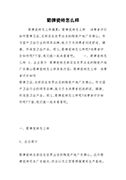
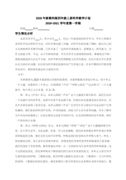
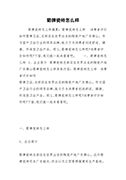
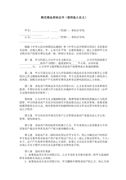
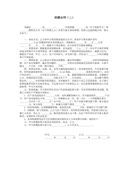
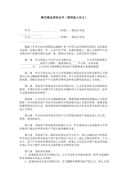












 扫一扫支付
扫一扫支付